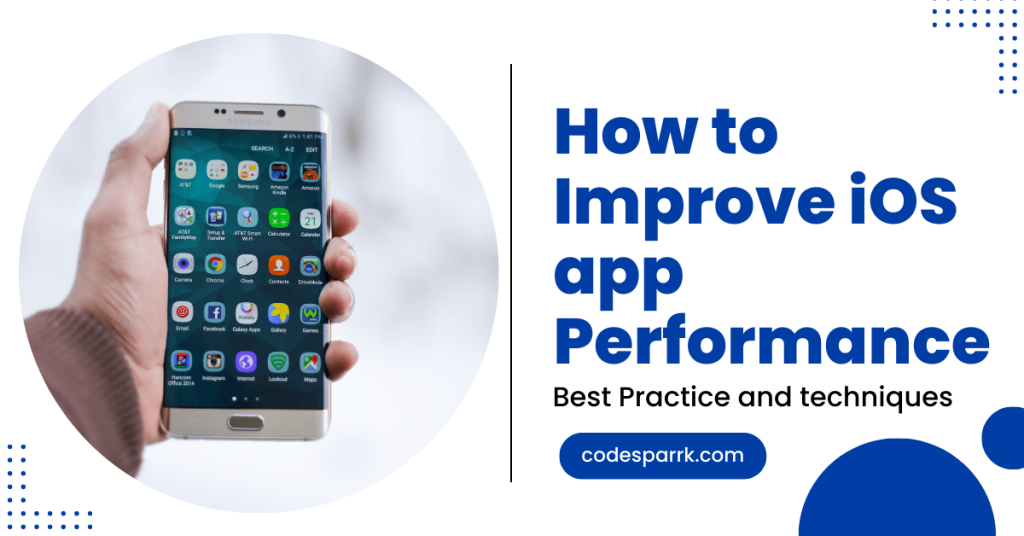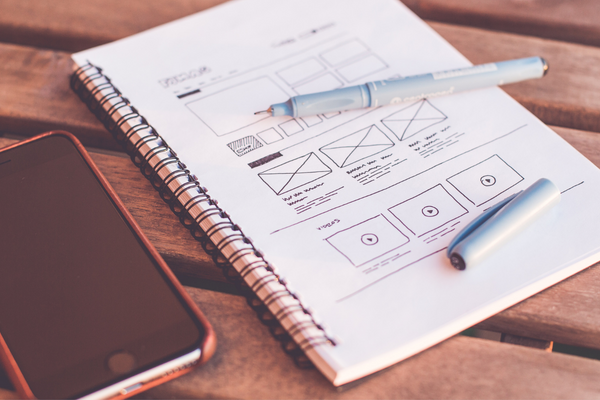Have a Requirement?
We build your dream project from conception to completion!
Leave Your Details and We’ll Get Back to You!

Are you struggling to improve the performance of your IOS app? Are you looking for ways to optimize your app’s speed, responsiveness, and reliability? If so, you’re in the right place. In this article, we’ll explore some of the most effective strategies for improving the performance of your IOS app. From optimizing your code to improving your user interface, we’ve got you covered. So, let’s get started!
When it comes to IOS app development, performance is everything. Users expect apps to be fast, responsive, and reliable. If your app doesn’t meet these standards, it won’t be long before users abandon it in favor of a competitor’s app.
With millions of IOS apps in the app store, it’s essential to create an app that stands out from the crowd. Improving your app’s performance is a critical component of creating an app that users will love.

App performance is vital for several reasons. First, users expect apps to load quickly and respond immediately to their inputs. If an app takes too long to load, users are likely to abandon it and switch to a competitor’s app. Second, app performance affects user engagement and retention. If an app crashes frequently or lags, users are less likely to use it regularly. Finally, app performance affects user reviews and ratings, which, in turn, affect the app’s ranking in the app store.
Several tools are available to help you analyze your app’s performance. Here are some of the most popular ones
Firebase Performance Monitoring is a cloud-based tool that helps you monitor your app’s performance. It allows you to track key performance indicators (KPIs) such as app start time, network latency, and rendering time
Firebase Performance Monitoring: Firebase Performance Monitoring is a cloud-based tool that helps you monitor your app’s performance. It allows you to track key performance indicators (KPIs) such as app start time, network latency, and rendering time.
Charles Proxy is a web debugging tool that allows you to intercept and inspect traffic between your app and the server. It can help you identify network issues and optimize your API calls.
Apple’s App Analytics provides you with data on your app’s performance, including user engagement, retention, and ratings. It can help you identify trends and make informed decisions about app updates.
That’s why it’s essential to focus on performance optimization from the very beginning of the development process. By following the tips and tricks outlined in this article, you’ll be well on your way to creating an app that users love to use.
You can this guide for best iOS app development frameworks
To improve your iOS app performance, there are several best practices and techniques to consider. You can optimize your app design, reduce UI lag, and improve networking to create a faster and more responsive app. In addition, writing efficient code, identifying and fixing performance issues, and reducing app size can also help improve performance.Here are some recommended best practices and techniques to follow
The quality of your code has a direct impact on your app’s performance. If your code is poorly optimized, your app will be slow and unresponsive. To improve your app’s performance, consider the following strategies:

A well-designed user interface can go a long way in improving your app’s performance. A cluttered and confusing interface can slow down your app and frustrate users. To create an effective user interface, consider the following tips:

Asynchronous processing is a technique that allows your app to perform multiple tasks simultaneously. By using asynchronous processing, you can improve your app’s responsiveness and reduce the risk of crashes. To implement asynchronous processing, consider the following techniques:
Images and videos can be a major source of performance issues in IOS apps. Large images and videos can slow down your app and consume valuable memory. To optimize your images and videos, consider the following strategies:

Efficient code is critical to the performance of your IOS app. Poorly written code can slow down your app, cause crashes, and drain the battery. In this article, we will discuss best practices for writing efficient code, strategies for identifying and fixing performance issues, and ways to reduce app size.

Use profiling tools: Profiling tools such as Xcode Instruments can help you identify performance bottlenecks in your app.
Monitor network traffic: Network traffic can be a significant source of performance issues. Monitor your app’s network traffic to identify issues such as slow API calls or excessive data usage.
Test on real devices: Testing your app on real devices is essential for identifying performance issues that may not be apparent in a simulator.
Optimizing your app’s design is essential to creating a smooth user experience. Here we will discuss techniques for optimizing app design, reducing UI lag, and improving user experience (UX).
Optimizing app networking is crucial to ensuring that your app functions smoothly and efficiently. Check out following strategies for optimizing API requests, reducing network requests, and improving caching techniques.
Use caching: Caching can reduce the number of network requests by storing data locally on the device. Use caching for frequently accessed data, such as user preferences or recently viewed items.
Implement offline functionality: Implementing offline functionality allows users to continue using your app even when they don’t have a network connection. Offline functionality can be achieved through caching, syncing, or local storage.
Minimize image size: Images can take up a lot of bandwidth and slow down network requests. Minimize image size by compressing images and using image formats that are optimized for the web.
Testing and measuring app performance improvements is critical to ensuring that your optimizations are working as intended. In this article, Lets check some best practices for testing app performance improvements and ways to measure the impact of those improvements.
Some important resources
Tips for improving mobile app performance
Improving the performance of your IOS app is essential if you want to create an app that users will love. By following the tips and tricks outlined in this article, you can optimize your code, improve your user interface, use asynchronous processing, and optimize your images and videos. These strategies will help you create an app that is fast, responsive, and reliable, and will keep users coming back for more.
If you’re struggling to improve the performance of your IOS app, don’t give up. Implement the strategies outlined in this article, and you’ll be on your way to creating an app that users will love.
Start by conducting a basic research on mobile app development companies. Check its customer reviews, client stories and testimonials. Most importantly, check the security of the idea for the app. Move on to giving them a call and shortlist by evakuting their app designing standards, and trusted QA and testing measures.
For procuring maximum u003cstrongu003ebenefits of mobile apps, u003c/strongu003echoose a mobile app development company that understand your ideation and work process. Clarify your terms of delivery and evaluation process. u003cbru003eThe mobile app development services however depends upon the complexity of your app. How many features and what type you want to build. It also depends upon miscellaneous factors including mobile app development company’s reputation, worth, history and quality of work.
From startups to full fledged enterprises, mobile app development has stood one of the most profitable option for everyone. Due to the increasing usage of mobile apps, app deveopment is your right investment window.
Get your app developed at cost effectives packages and get a free consultation on your ideation today!
We build your dream project from conception to completion!
Leave Your Details and We’ll Get Back to You!
